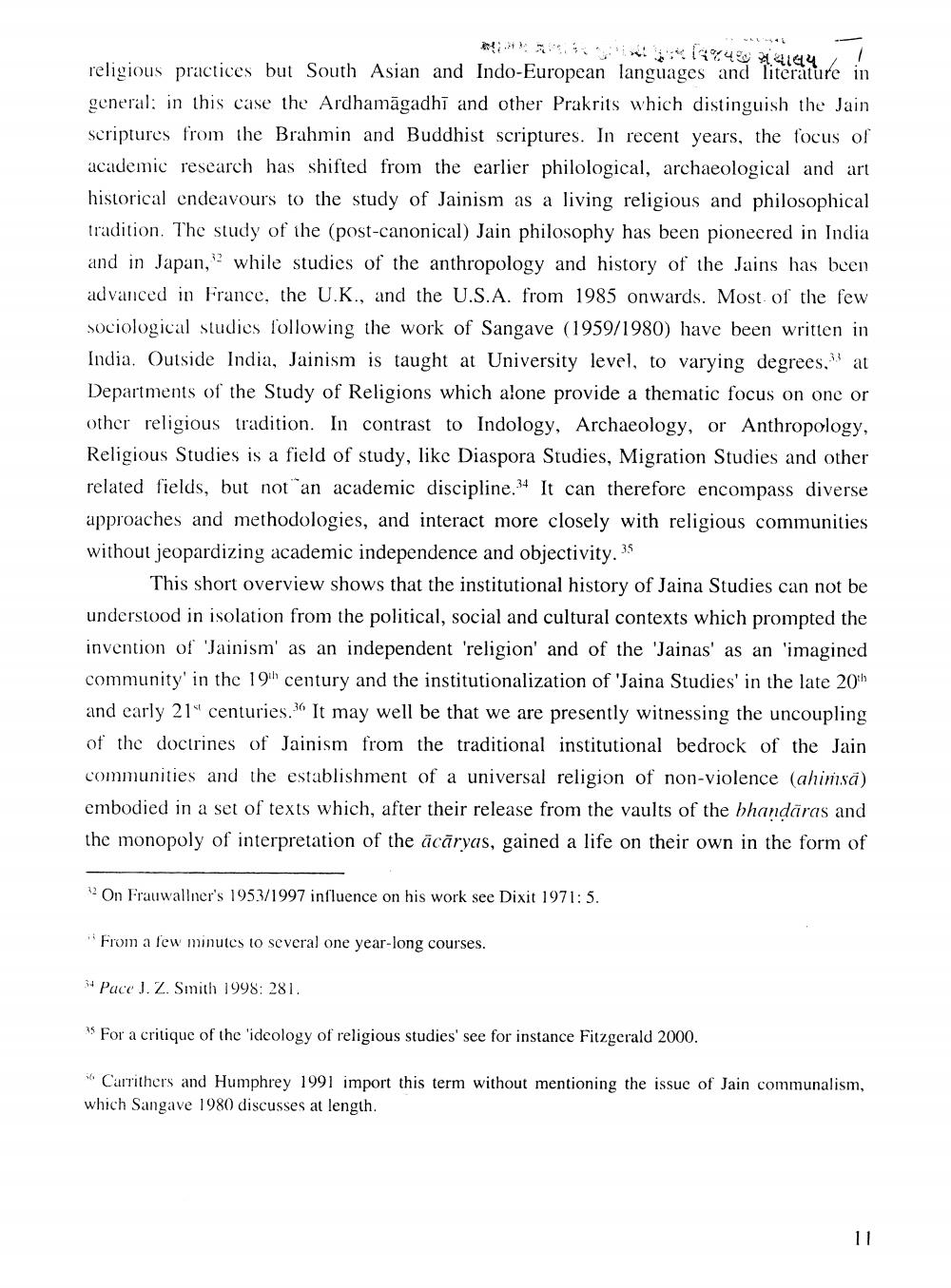________________
::
16482144 religious practices but South Asian and Indo-European languages and literature in general: in this case the Ardhamāgadhi and other Prakrits which distinguish the Jain scriptures from the Brahmin and Buddhist scriptures. In recent years, the focus of academic research has shifted from the earlier philological, archaeological and art historical endeavours to the study of Jainism as a living religious and philosophical tradition. The study of the (post-canonical) Jain philosophy has been pioneered in India and in Japan, while studies of the anthropology and history of the Jains has been advanced in France, the U.K., and the U.S.A. from 1985 onwards. Most of the few sociological studies following the work of Sangave (1959/1980) have been written in India. Outside India, Jainism is taught at University level, to varying degrees, at Departments of the Study of Religions which alone provide a thematic focus on one or other religious tradition. In contrast to Indology, Archaeology, or Anthropology, Religious Studies is a field of study, like Diaspora Studies, Migration Studies and other related fields, but not an academic discipline.34 It can therefore encompass diverse approaches and methodologies, and interact more closely with religious communities without jeopardizing academic independence and objectivity. 35
This short overview shows that the institutional history of Jaina Studies can not be understood in isolation from the political, social and cultural contexts which prompted the invention of Jainism as an independent 'religion' and of the 'Jainas' as an 'imagined community in the 19ih century and the institutionalization of 'Jaina Studies' in the late 20th and early 21" centuries.36 It may well be that we are presently witnessing the uncoupling of the doctrines of Jainism from the traditional institutional bedrock of the Jain communities and the establishment of a universal religion of non-violence (ahinsa) embodied in a set of texts which, after their release from the vaults of the bhandāras and the monopoly of interpretation of the äcāryas, gained a life on their own in the form of
12 On Frauwallner's 1953/1997 influence on his work see Dixit 1971: 5.
From a few minutes to several one year-long courses.
3+ Pace J. Z. Smith 1998: 281.
** For a critique of the 'ideology of religious studies' see for instance Fitzgerald 2000.
Carrithers and Humphrey 1991 import this term without mentioning the issue of Jain communalism, which Sangave 1980 discusses at length.




